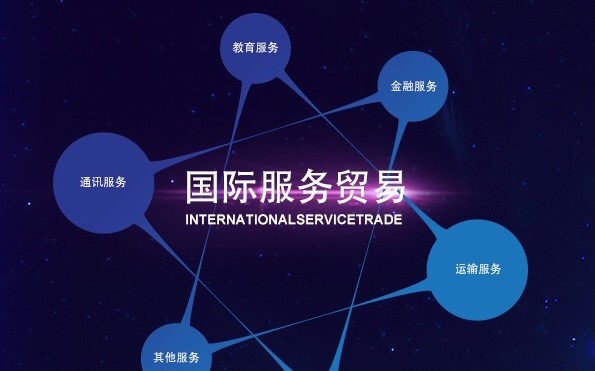
当前课程知识点:Green Economy from China's Stories > 7. Sustainable Development > 7.2.2 China's Achievements in Sustainable Development > 7.2.2 China's Achievements in Sustainable Development
返回《Green Economy from China's Stories》慕课在线视频课程列表
返回《Green Economy from China's Stories》慕课在线视频列表
大家好
欢迎进入《绿色经济与中国实践》
最后
我们共同来看看
这些年中国在可持续发展方面取得的成就
第一
全面消除绝对贫困
提前10年实现
第一项可持续发展目标
改革开放之初
中国农村贫困人口
高达7.7亿
贫困发生率达97.5%
短短40年过去
中国完成了卓越的经济转型
8亿多人成功脱贫
贫困发生率下降到2017年底的3.1%
为世界减贫贡献率超过70%
这是人类发展史上
具有里程碑意义的重大成就
到2020年
中国将全部消除绝对贫困人口
十几亿中国人
将共同迈入全面小康
对此
英国《经济学人》杂志不禁赞誉:
在减贫方面
“中国是个英雄”
第二
健康 教育
公共服务等领域取得明显进步
妇幼健康
是人民健康水平的重要标志
也是一个国家文明程度的重要标志
近年来
中国妇女儿童健康水平
显著提高
2018年
全国孕产妇死亡率下降到18.3/10万
婴儿死亡率下降到6.1‰
此外
中国已基本实现全民医保覆盖
基本医保制度也已全面建立
正沿着高质量 精细化的轨道阔步前行
面对人们越来越多样化的需求
中国正着力缩小地区差异
完善保障适度
可持续的多层次医疗保障体系
不断提升人民的获得感与幸福感
与此同时
中国教育普及率不断升高
达到中高收入国家
平均水平
2017年中国小学和初中教育完成率
接近100%
公共服务领域方面
近年来
各地区党委 政府扎实推进
《法治政府建设实施纲要(2015-2020年)》
确定的各项目标任务
法治政府建设
取得积极成效
司法部大力推进公共法律服务实体
热线 网络等三大平台建设
改善服务条件
统筹利用中央财政转移支付资金等
资金渠道
加强公共法律服务经费保障
并对欠发达地区予以倾斜
将低收入群体 残疾人
农民工 老年人 青少年
单亲困难母亲等特殊群体
和军人军属 退役军人
及其他优抚对象
作为公共法律服务的重点对象等
不断推进基本公共法律服务
均衡发展
第三
加大对可持续发展的投资
生态环境得到了显著改善
来自澳大利亚 中国 美国的16家单位的
19名科学家组成的科研团队
于2018年7月
在国际顶级期刊Nature上发表题为
论文
在改善自然环境可持续发展方面
取得的巨大成就
近四十年来
中国进行了人类历史上规模最大的
土地系统可持续发展的干预活动
启动了包括三北防护林
天然林保护
退耕还林还草等
一系列投资巨大
在国内甚至世界上都具有重要影响的
生态环境建设工程
该研究团队发现
自1998年起
中国对可持续发展的投资急剧增加
至2015年
这16个工程在约624万平方公里的土地上
(中国国土面积的65%)
共投资了3785亿美元
并调动了5亿劳动力
这一努力在全球范围内都是史无前例的
尽管不完美
但确实给整个国家的自然环境
与人民的生活环境
带来了莫大的好处
联合国在2015年底
才提出来17个可持续发展目标
而早在中国的这一系列重大工程
已经致力于解决众多的可持续发展目标
(如图所示)
这些工程的环境目标
包括缓解长江和黄河的侵蚀
沉积及洪水
在干旱的北方防治沙漠化
在多石灰岩的西南部地区治理石漠化
减少沙尘暴对首都北京
及附近地区的影响
保护天然林地
以及提高耕地生产力等
(如图所示)
中国可持续发展的一个重要节点
是在20世纪90年代末
中国经历了一系列的
人们普遍认为是由不可持续的土地管理导致的
自然灾害
包括1997年的黄河断流
1998年的长江水灾
2000年的北京沙尘暴等
这一系列的事件触发了
中国的可持续发展投资加速
中国启动了众多的生态建设工程
(如图所示)
包括退耕还林还草工程
和天然林保护工程
并且加速了
旨在减缓和逆转荒漠化的
三北防护林工程项目的投资
形成了一条4500公里的绿色长城
中国可持续发展投资的成果
非常显著
中国森林覆盖率
已从上世纪90年代的低于10%
提高到2018年的22.96%
森林面积达到2.2亿公顷
森林蓄积175.6亿立方米
在森林面积和蓄积两个领域
中国已经连续30多年
保持“双增长”
成为全球森林资源
增长最多的国家
不仅是中国数据支撑了这一观点
2019年2月
美国NASA公布的全球绿叶面积调查数据
也同样证实了中国的森林面积在增长
报告显示
2000~2017年
地球新增的绿叶面积
约为200万平方英里
相当于多出一块亚马逊雨林
这其中净增长率最高的是中国(17.8%)
其次是印度(11.1%)和欧盟(7.78%)
绿叶面积净增长最多的同样是中国
高达135.1万平方公里
几乎相当于俄罗斯 美国和加拿大
绿叶净增长面积的总和
高达全球新增绿化面积的四分之一
在这些数据的背后
是中国数十年来坚持治沙
绿化政策的功劳
先后实施过退耕还林
三北防护林
长江中下游地区
防护林等重点工程
仅仅是2004到2017年期间
就植树造林超过8208.5万公顷
中国拥有近14亿人口
中国可持续发展的成就本身
就是全球可持续发展的重要组成部分
中国探索出的一条经济 社会
环境协调并进的可持续发展之路
为广大发展中国家
提供了中国智慧和中国方案
正是在中国的推动下
2016年G20杭州峰会第一次将发展问题
置于全球宏观政策框架的突出位置
第一次
应对全球变暖的《巴黎协定》
能够终于达成
中国展现了大国担当
中国还积极深化南南合作
设立中国—联合国和平与发展基金
南南合作援助基金
推动共建“一带一路”
同2030年可持续发展议程深入对接
为全球实现可持续发展目标
作出积极贡献
好 今天的课就上到这里
谢谢大家
-1.1.1 Global Environmental Issues and Ecological Crisis
--1.1.1 Global Environmental Issues and Ecological Crisis
-1.1.2 Environmental Issues and Governance Results in China
--1.1.2 Environmental Issues and Governance Results in China
-1.2.1 Attention from the International Community to Ecological and Environmental Issues
--1.2.1 Attention from the International Community to Ecological and Environmental Issues
-1.2.2 Reflection of the International Community on Ecological and Environment Issues
--1.2.2 Reflection of the International Community on Ecological and Environment Issues
-1.2.3 China's Practice of Ecological and Environmental Protection (a)
--1.2.3 China's Practice of Ecological and Environmental Protection (a)
-1.2.3 China's Practice of Ecological and Environmental Protection (b)
--1.2.3 China's Practice of Ecological and Environmental Protection (b)
-1.3 The Origin of Ecological and Environmental Issues
--1.3 The Origin of Ecological and Environmental Issues
-Chapter I Test
-2.1 Teaching Materials
-2.2 Practice in China
-Chapter II Test
-3.1 Research Hotspots
-3.2.1 Industrial Ecology
-3.2.2 Environmental Value Spillover
--3.2.2 Environmental Value Spillover
-3.2.3 "Two Mountains" Theory (a)
--3.2.3 "Two Mountains" Theory (a)
-3.2.3 "Two Mountains" Theory (b)
--3.2.3 "Two Mountains" Theory (b)
-Chapter III Test
-4.1.1 International background
--4.1.1 International background
-4.1.2 Background in China
-4.2 3R Principles
-4.3 3 levels
-4.4.1 Progress
-4.4.2 Policies
-Chapter IV Test
-5.1 The concept of Low-carbon Economy
--5.1 The concept of Low-carbon Economy
-5.2 The origin of the Low-carbon Economy theory
--5.2 The origin of the Low-carbon Economy theory
-5.3 Practice in Developed Countries
--5.3 Practice in Developed Countries
-5.4 Practice in China
-Chapter V Test
-6.1 The Concept of Green Economy
--6.1 The Concept of Green Economy
-6.2.1 Development and Research Progress of the Green Economy
--6.2.1 Development and Research Progress of the Green Economy
-6.2.2 Actions on Green Economy and Future Development Trend of Green Economy
--6.2.2 Actions on Green Economy and Future Development Trend of Green Economy
-6.3 Assessment Methods for Development of Green Economy
--6.3 Assessment Methods for Development of Green Economy
-6.4.1 Formation and Application of Green Economy Development Thought
--6.4.1 Formation and Application of Green Economy Development Thought
-6.4.2 Practice and Inspirations of Green Economy Development
--6.4.2 Practice and Inspirations of Green Economy Development
-Chapter VI Test
-7.1 The Concept of Sustainable Development
--7.1 The Concept of Sustainable Development
-7.2.1 The formation of sustainable development in China
--7.2.1 The formation of sustainable development in China
-7.2.2 China's Achievements in Sustainable Development
--7.2.2 China's Achievements in Sustainable Development
-7.3.1 EKC Hypothesis and Its Origin
--7.3.1 EKC Hypothesis and Its Origin
-7.3.2 Enlightenment of EKC on China's Environmental Governance
--7.3.2 Enlightenment of EKC on China's Environmental Governance
-Chapter VII Test
-8.1 The Connotation and Assessment Significance of Ecosystem Service Value
--8.1 The Connotation and Assessment Significance of Ecosystem Service Value
-8.2 The Research Progress of Ecosystem Service Value Assessment
--8.2 The Research Progress of Ecosystem Service Value Assessment
-8.3 Practice in China
-Chapter VIII Test
-9.1.1 Theoretical Concept
-9.1.2 Research Prospect
-9.2 Development Process of Ecological Footprint
--9.2 Development Process of Ecological Footprint
-9.3.1 Research Scale
-9.3.2 Research Industry
-Chapter IX Test
-10.1 Environmental Policy Assessment Standards
--10.1 Environmental Policy Assessment Standards
-10.2 Types of Environmental Policies (a)
--10.2 Types of Environmental Policies(a)
-10.2 Types of Environmental Policies (b)
--10.2 Types of Environmental Policies(b)
-10.3 Case study——River Chief Policy
--10.3 Case study——River Chief Policy
-Chapter X Test
-Final exam
--Final exam




